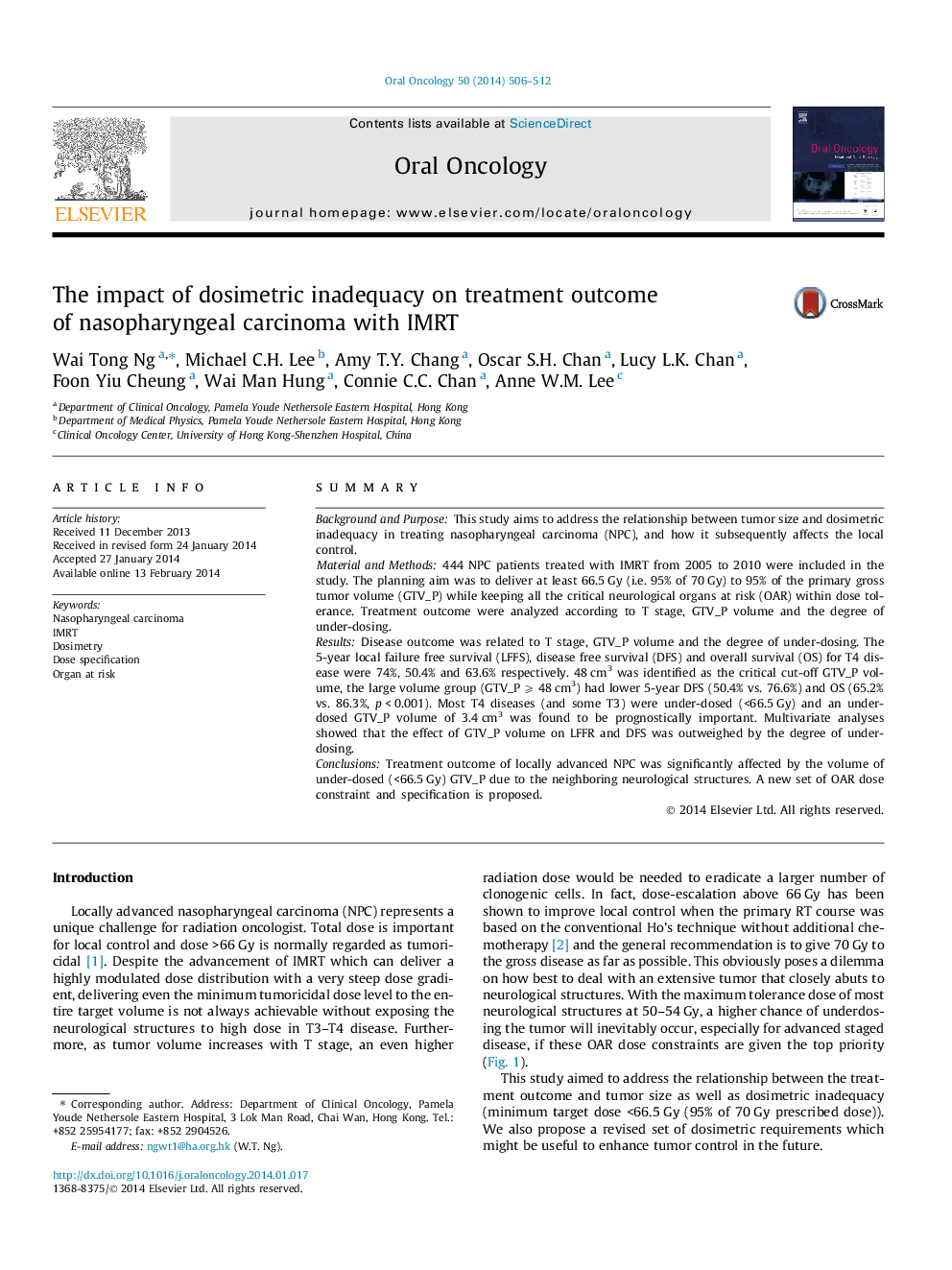| Article ID | Journal | Published Year | Pages | File Type |
|---|---|---|---|---|
| 3164256 | Oral Oncology | 2014 | 7 Pages |
SummaryBackground and PurposeThis study aims to address the relationship between tumor size and dosimetric inadequacy in treating nasopharyngeal carcinoma (NPC), and how it subsequently affects the local control.Material and Methods444 NPC patients treated with IMRT from 2005 to 2010 were included in the study. The planning aim was to deliver at least 66.5 Gy (i.e. 95% of 70 Gy) to 95% of the primary gross tumor volume (GTV_P) while keeping all the critical neurological organs at risk (OAR) within dose tolerance. Treatment outcome were analyzed according to T stage, GTV_P volume and the degree of under-dosing.ResultsDisease outcome was related to T stage, GTV_P volume and the degree of under-dosing. The 5-year local failure free survival (LFFS), disease free survival (DFS) and overall survival (OS) for T4 disease were 74%, 50.4% and 63.6% respectively. 48 cm3 was identified as the critical cut-off GTV_P volume, the large volume group (GTV_P ⩾ 48 cm3) had lower 5-year DFS (50.4% vs. 76.6%) and OS (65.2% vs. 86.3%, p < 0.001). Most T4 diseases (and some T3) were under-dosed (<66.5 Gy) and an under-dosed GTV_P volume of 3.4 cm3 was found to be prognostically important. Multivariate analyses showed that the effect of GTV_P volume on LFFR and DFS was outweighed by the degree of under-dosing.ConclusionsTreatment outcome of locally advanced NPC was significantly affected by the volume of under-dosed (<66.5 Gy) GTV_P due to the neighboring neurological structures. A new set of OAR dose constraint and specification is proposed.
